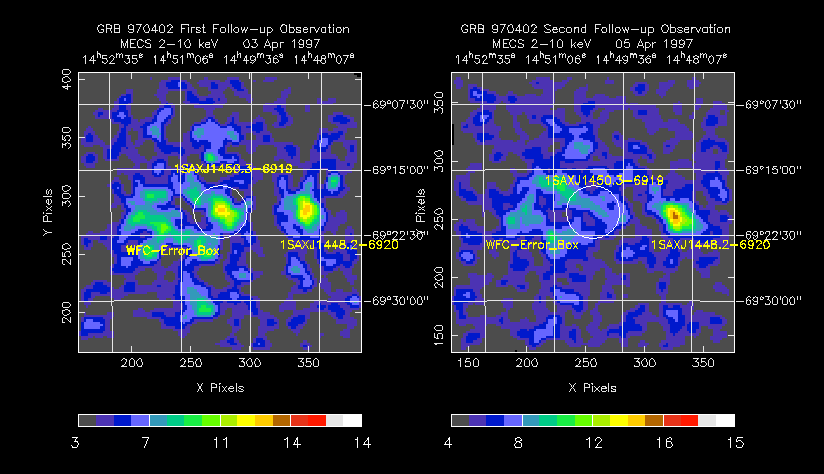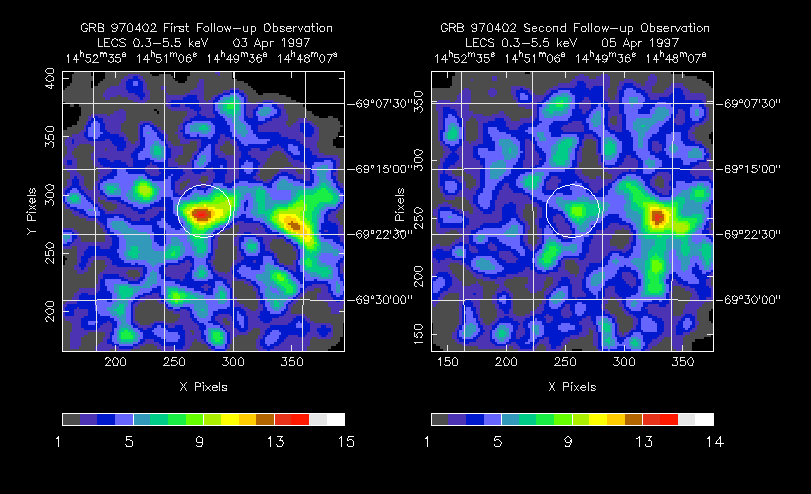
The gamma ray burst, GRB 970402, was discovered simultaneously in the data from the Gamma Ray Burst Monitor and Wide Field Cameras onboard by the team of italian/dutch scientists at 10:32 pm on 02 April 1997 who continually monitor the satellite data at the Scientific Operations Center in Nuova Telespazio, Rome.
On the basis of experience gained in the previous observations of such objects , the BeppoSAX Team was able to reschedule the satellite observations and point the BeppoSAX narrow field X-ray telescopes in only 7.5 hours at the gamma-ray burst source. In consequence an X-ray source never before seen was discovered and localized with an accuracy of one hundreth of a degree. The source is actually in the constellation of Octans in the south sky.
A second follow-up has been performed with narrow field instruments after about 1 day. This second observation has shown that the source disappeared. The pictures taken during the two follow-up observations are shown in the figure below.The first one is relatively to MECS observations, the second one to LECS observations.


The the two sources in the field are both new X-ray sources
A - 1SAX J1450.1-6920
B - 1SAX J1448.2-6920
Source A is associated with the Gamma Ray Burst GRB 970402 IAUC 6610.
Source B is a serendipitous source with a X-ray flux of the order of 0.01 mCrab. SAX J0501.7+1146, has been detected by the MECS and LECS at the same position (R.A. = 14h50m6s, Decl. = -69o20'.0, equinox 2000.0; estimated error radius 50"). This position lies at the center of the reported BeppoSAX WFC error box (IAUC 6610) . The source count rate was (3.0+/-0.7)x10E-3 cts sE-1, corresponding to a flux of (1.5 +/- 0.5) x 10E-13 erg cmE-2 sE-1 in the MECS (2-10 keV) and (2.0+/-0.6)x10E-3 cts sE-1 in the LECS (0.5-5 keV) corresponding to (2.0+/-0.6) x 10E-13 erg cmE-2 sE-1 in the 0.5-5 keV range. The flux conversion has been derived assuming the galactic column density and a power law with photon index = 2. The source showed a decreasing trend during the observation. The field was observed again on Apr. 4.634 for 50~000 s. No source was detected in the position of SAX J1450.1-6920. The 3 sigma upper limit on the source flux implies a decrease by a factor of 3 or more.